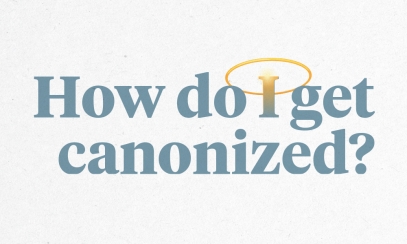
What is necessary for a valid baptism?
Getting your Trinity Audio player ready...When a non-baptized, unconscious, dying soldier’s colonel asked a military priest-chaplain to baptize him, to “save” him, the priest sought canonical guidance from me on whether he could validly perform the baptism. What is necessary for the soldier’s valid baptism?
When a non-baptized, unconscious, dying soldier’s colonel asked a military priest-chaplain to baptize him, to “save” him, the priest sought canonical guidance from me on whether he could validly perform the baptism. What is necessary for the soldier’s valid baptism?
First, deeper theological, liturgical, pastoral, and communal significance must not be overlooked when analyzing validity, as if the latter excuses cavalier dismissal of the former.
Second, requirements for valid baptism may be found in the Code of Canon Law and other Church legislation. Validity is the principal focus of the answer, not necessarily what constitutes liceity (legitimacy). Three essential elements condition the validity of baptism: matter, form, and intention.
Canon 849 indicates baptism is to be performed using “true water” (matter) and the “proper form of words” (form). True water, understood as the matter determined by its common estimation (H2O composed of water molecules, potentially with dissolved substances or impurities, such as tap or salt water), must be applied by immersion or pouring (c. 854), with partial immersion — specifically over the head — meeting the minimal requirement, while excluding substantial deviations like tears, beer, saliva, milk, and other similar substances. For validity, water must touch the skin of a principal part of the body—such as the head, chest, or back — through immersion or pouring; although sprinkling might be valid, it may require further investigation.
While administering water, the minister pronounces the Trinitarian formula, the essential form: “I baptize you in the name of the Father, and of the Son, and of the Holy Spirit.” Substituting the “I” with “We” or the Trinitarian names with other terms is a substantial alteration rendering the baptism invalid. The one pronouncing the form must be the same person applying the matter.
Third, correct form and matter are insufficient without right intention. While clerics are ordinary ministers, in cases of necessity, “any person” can baptize, provided they intend to do what the Church intends when it baptizes. (c. 861 §2)
The recipient must be non-baptized. (c. 864) Adults (over age 7 with use of reason), must “have manifested the intention to receive baptism” (c. 865 §1), that is, some positive act of the will to receive baptism. In danger of death, adults who have “some knowledge” of the principal truths of the faith and manifested in “any way at all” the intention to receive baptism, promising to observe the commandments (c. 865 §2) can be baptized.
Infants (i.e., under age 7 or without use of reason), with the consent of at least one parent/guardian can be baptized, if there is a “reasonable hope” the child will be raised in the Catholic faith. (c. 868 §1) In danger of death, the child may be baptized without parental/guardian consent (c. 868 §2), requiring only the application of water “on the child” while pronouncing the form.
If the military priest-chaplain determines that the unconscious soldier fulfilled the bare minimum of adult, danger-of-death requirements, baptism can be administered.
Father Mark is looking forward to addressing your questions related to canon law, our Catholic faith, and how we can live it out in our everyday lives. Please send your questions to faithquestions@dioceseoflansing.org.



